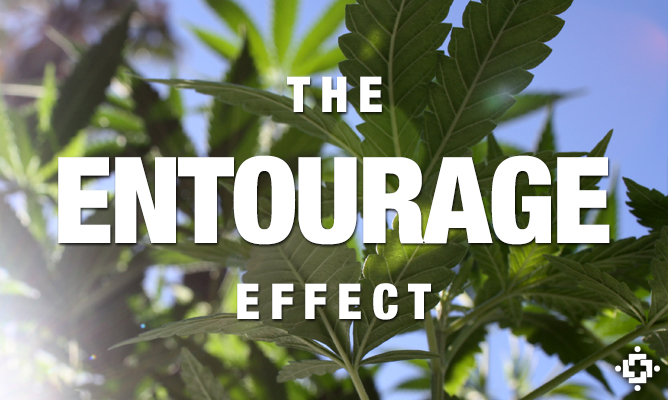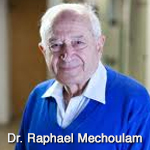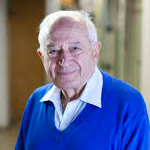
Medical Marijuana: Much More Than Just THC and CBD
For years now Δ9-tetrahydrocannabinol (THC) has been the most popular and widely researched cannabinoid in cannabis science. However, nowadays it seems like cannabidiol (CBD) has stolen the spotlight given its ability to provide therapeutic relief to children suffering from various epileptic disorders, while lacking the psychotropic effects (i.e. high) of THC. It’s even gotten to the point that state legislature are passing laws “CBD-only” medical marijuana legislation.
Given all of this, it is easy to see how CBD and THC can be viewed as being in competition. But the reality is that both compounds, along with as many as 66 other cannabinoids, play important roles in providing the therapeutic benefits associated with cannabis therapy. They work in conjunction with approximately 420 additional compounds (terpenes, flavonoids, etc.) to give cannabis its versatility in treating a multitude of medical ailments.
Medical Marijuana: Much More Than Just THC and CBD
As good students of the Cannabis Classroom, you are probably familiar with the previous pieces which featured what can simply be described as the Big Six cannabinoids: THC, CBD, CBG, CBN, CBC, and THCV. Each cannabis plant contains these and many other cannabinoids at various percentages as part of the plant’s total chemical profile.
“The chemical profile of the cannabis plant contains other compounds like terpenoids, amino acids, proteins, sugars, enzymes, fatty acids, esters, and flavonoids…”
In addition to cannabinoids, the chemical profile of the cannabis plant contains other compounds like terpenoids, amino acids, proteins, sugars, enzymes, fatty acids, esters, and flavonoids, just to name a few.
Naturally, you consume all of these compounds when medicating with cannabis. The question is how do all of these compounds work together to provide therapeutic relief? The answer can be found in a concept called the “entourage effect.”
The Entourage Effect: Chemical Teamwork
 First described in 1998 by Israeli scientists Shimon Ben-Shabat and Raphael Mechoulam, the basic idea of the entourage effect is that cannabinoids within the cannabis plant work together, or possess synergy, and affect the body in a mechanism similar to the body’s own endocannabinoid system.
First described in 1998 by Israeli scientists Shimon Ben-Shabat and Raphael Mechoulam, the basic idea of the entourage effect is that cannabinoids within the cannabis plant work together, or possess synergy, and affect the body in a mechanism similar to the body’s own endocannabinoid system.
This theory serves as the foundation for a relatively controversial idea within pharmacology community, that in certain cases whole plant extractions serve as better therapeutic agents than individual cannabinoid extractions. The entourage effect theory has been expanded in recent times by Wagner and Ulrich-Merzenich, who define the four basic mechanisms of whole plant extract synergy as follows:
- Ability to affect multiple targets within the body
- Ability to improve the absorption of active ingredients
- Ability to overcome bacterial defense mechanisms
- Ability to minimize adverse side effects.
Affecting Multiple Targets
Many studies have demonstrated the effectiveness of cannabis as a therapeutic agent for muscle spasms associated with multiple sclerosis. A study conducted by Wilkinson and colleagues determined that whole-plant extracts were more effective than THC alone.
Researchers compared 1mg THC vs. 5mg/kg cannabis extract with the equivalent amount of THC, and found the whole plant extract to have significantly more antispastic effect.
The researchers attributed this result to the presence of cannabidiol (CBD) within the cannabis extract, which helps to facilitate the activity of the body’s endocannbinoid system.
Improving Absorption Of Active Ingredients
The entourage effect can also work to improve the absorption of cannabis extracts. Cannabinoids are chemically polar compounds, which makes them at times makes them difficult for the body to absorb in isolation.
“With the assistance of terpenoids like caryophyllene, absorption of cannabinoids can be increased.”
Absorption of topicals provides a prototypical example of this problem. The skin is made up of two layers, also known as a bi-layer, which makes it difficult for for very polar molecules like water and cannabioids to pass through.
With the assistance of terpenoids like caryophyllene, absorption of cannabinoids can be increased and therapeutic benefits achieved.
Overcoming Bacterial Defense Mechanisms
The entourage effect also accounts for cannabis extracts to be effective in treating various bacterial infections. There are a number of studies which show the antibacterial properties of cannabinoids.
“Whole-plant cannabis extracts have non-cannabinoid constituents which also have antibacterial properties.”
However, bacteria develop defense mechanisms over time to combat the effects of antibiotics ultimately allowing them to become resistant to therapies which were previously effective.
Thus, it is beneficial that whole-plant cannabis extracts have non-cannabinoid constituents that also have antibacterial properties. These molecules attack bacteria through pathways which differ from cannabinoid pathways. Given the attack on multiple fronts, the development of bacterial resistance is limited.
Minimizing Adverse Side Effects
Finally, the entourage effect allows certain cannabinoids to modulate the negative side effects of other cannabinoids. The most fitting example of this is CBD’s ability to modulate the perceived negative effects of THC.
Many patients have heard about (or experienced) the increased anxiety and paranoia sometimes associated with cannabis consumption. Thanks to the entourage effect, research has shown that CBD can be effective in minimizing the anxiety associated with THC, lowering users’ feelings of paranoia.
As you can see, THC, CBD, and the remaining cannabinoids don’t have to compete with one another – they can work in tandem alongside the other components of cannabis extracts to provide therapeutic relief for a wide variety of ailments.
Raphael Mechoulam is an Israeli organic chemist and professor of Medicinal Chemistry at the Hebrew University of Jerusalem in Israel. Mechoulam is best known for his work (together with Y. Gaoni) in the isolation, structure …
Dr. Malik Burnett is a physician advocate who completed his medical and business training at Duke University. He believes that a public which is better informed about the science behind cannabis will be able to …

